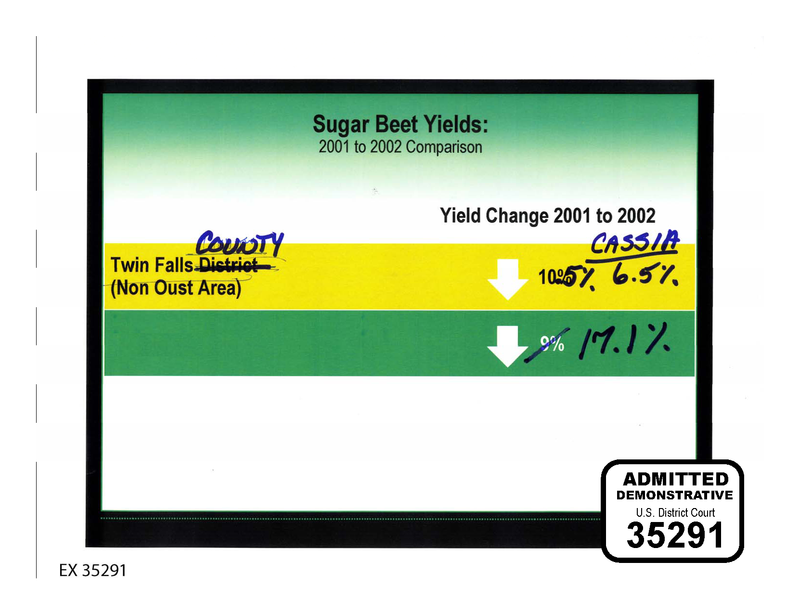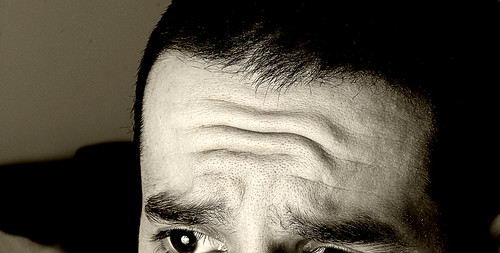By: Dr. Ken Broda Bahm –
When the case comes down to ‘expert versus expert,’ one important question is, what makes jurors believe one expert witness over another? Applying the rational model of law, we would like to think that jurors would evaluate the credentials, the methodology, and the strength of the conclusions offered, and compare the competing experts based upon the appropriate standards of the field. That would be rational, but alas, not really typical in the courtroom. Instead, jurors can bring a wide variety of tools to the assessment of experts, including their own visceral reactions to the individual witnesses, as well as their own possibly naive views on the subject matter. We have, however, discovered one important shortcut when it comes to cutting down the credibility of your opposing expert, and it squares with recent research on how people judge the sources of new information. That shortcut is to point out the “Large Internal Error” (L.I.E. for short) in the other side’s conclusions. This is a more specific point than just “show how they are wrong” and goes beyond just “show that you are better.” Instead, what works best is to focus on a mistake that is part and parcel of your adversary’s analysis. The important criteria are:
1.) It is Large. A minor or inconsequential mistake could easily be seen as a distraction. A large error is one that goes to the question of whether jurors can trust the source or not.
2.) It is Internal to that expert’s own methods and approach. It isn’t enough that you would have done it differently. Instead, the best point is, “even on your own terms (methods, assumptions, design, etc.), you messed up.”
3.) It is an Error. It isn’t just a comparative advantage to your expert’s approach, it is a mistake, miscalculation, exaggeration, omission, or a bungle.
Now granted, a good opposing expert won’t always give you a Large Internal Error to work with, but the more you look for one, the better your chances of finding a very simple tool to allow jurors to side with your analysis. Instead of contenting yourself with the feeling that your analysis is better (an approach that academics rewards), it is worthwhile to focus on the simpler reasons why your adversary is wrong (an approach that jurors understand).
Everyone who has tried an experts-based case knows that the testimony can get complicated very quickly. If it just comes down to two or more experts of apparently equal competence who have simply reached different conclusions in the courtroom, then jurors can end up dismissing the issue as a ‘judgment call,’ or rely on their own beliefs. If an expert can be shown to have made an important mistake, on the other hand, the loss of credibility for that expert can extend to their entire testimony. Why do jurors find it so much easier to accept the superiority of one expert when, arguably, the other expert made a mistake? The answer has to do with the way humans process new information. There is a very influential model of persuasion with the ungainly name of “Elaboration Likelihood Model.” Briefly, the idea is that there are two routes that people tend to take when accepting new information or making a decision. The “peripheral route” is the easier route that relies on readily available, though not necessarily reliable, cues (Think about how you impulse buy a candy bar in the checkout line: you don’t give it a lot of thought, and as a result, the packaging could make a difference). On the other hand, the “central route” is the more thoughtful route, where you consider the implications, advantages, and disadvantages of your decision (Think about how you make a big purchase, like a new car). We know that some jurors approach the expert testimony peripherally, like the impulse candy bar, and some approach it centrally, like the new car, and it can be hard to tell which approach they are taking (adapting to both kinds of jurors could well be the subject of another post).
But the beauty of framing the opposing expert’s testimony in terms of the Large Internal Error is that it bridges both poles. Relying on expert credentials tends to appeal to those on the peripheral route, and relying on the superiority of methodology tends to require the attention of those on the central route. A “mistake,” on the other hand, is both easy to grasp (for those on the peripheral route) as well as substantive in its implications (for those on the central route).
A recent study (Kumkale, Albarracin & Seignourel, 2010) combined data from a number of other investigations, and concluded that the credentials of a source do tend to matter when your audience has no current attitudes on the topic, and when they lack the motivation or the ability to analyze the content more fully. Even under those conditions, however, the effects of source credibility tended to diminish quickly, which is an important implication in a longer trial. The existence of a clear error, on the other hand, can provide a more memorable moment for jurors to hang on to.
I will share one example from a recent trial. An attorney I know was cross-examining an expert tasked with calculating the lost yields and economic damages experienced by a sugar beet farmer who was the client. Throughout the examination, it became clear that the expert had made a number of mistakes in the analysis. Initially, the questions focused on a number of smaller problems in the expert’s analysis: an incorrect label here, a reference to the wrong county there. But soon, the attorney was able to take aim at the math at the heart of the expert’s analysis. Approaching the witness with a calculator, the attorney asked the expert to recreate the calculations underlying a chart the expert had used in direct the day before. In a courtroom moment that was about as dramatic as it gets during damages testimony, the math turned out not to just be wrong, but to be way off, in favor of the expert’s client. To make this exchange even more memorable, the attorney had been using a marking pen and the Elmo to make edits directly on the expert’s own exhibit. The final corrected version (shown below) was then marked as a demonstrative, photographed, and used in closing argument.

After the verdict, I had the chance to talk to the jurors. Though the mistakes related to just a few out of literally hundreds of calculations, what stuck with jurors was the Large Internal Errors: the fact that the expert had made mistakes, significant mistakes, and mistakes based within the expert’s own method. At the mention of the expert’s name, one juror said, “Oh him, he was the one who was wrong, wasn’t he?” That is definitely the way you want your jurors to remember your opposing expert.
 Kumkale, G., Albarracín, D., & Seignourel, P. (2010). The Effects of Source Credibility in the Presence or Absence of Prior Attitudes: Implications for the Design of Persuasive Communication Campaigns Journal of Applied Social Psychology, 40(6), 1325-1356 DOI: 10.1111/j.1559-1816.2010.00620.x
Kumkale, G., Albarracín, D., & Seignourel, P. (2010). The Effects of Source Credibility in the Presence or Absence of Prior Attitudes: Implications for the Design of Persuasive Communication Campaigns Journal of Applied Social Psychology, 40(6), 1325-1356 DOI: 10.1111/j.1559-1816.2010.00620.x
Photo Credit: Bryan Rosengrant, Flickr Creative Commons
